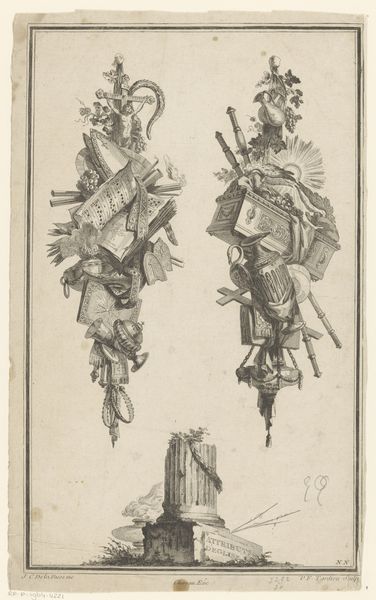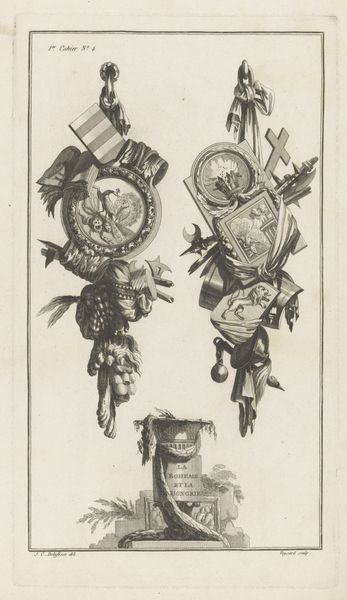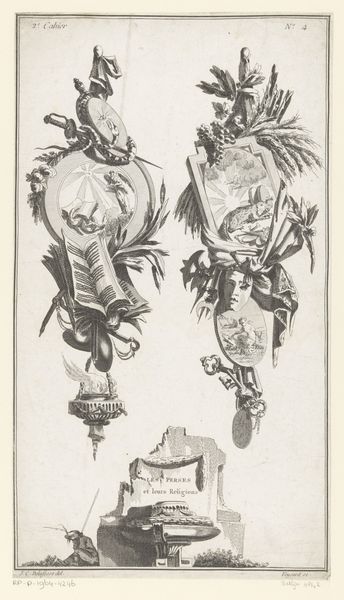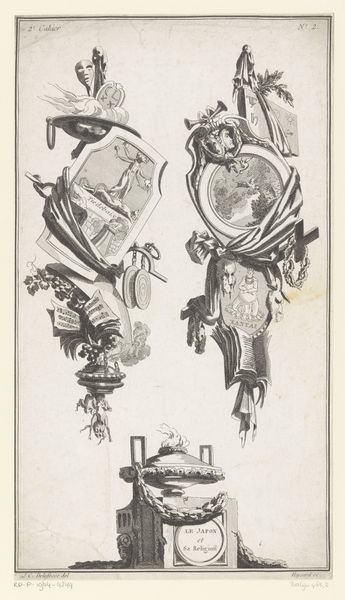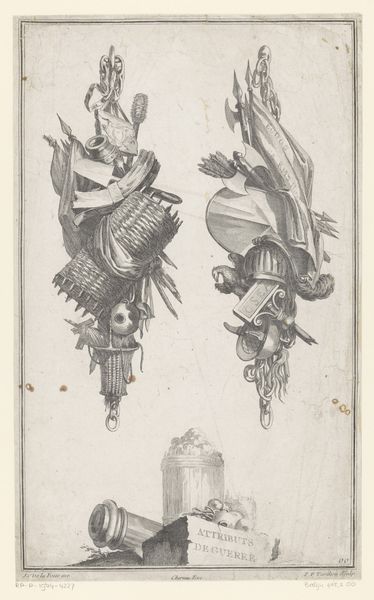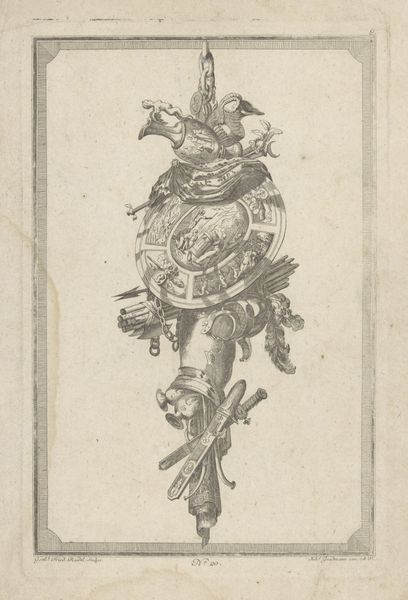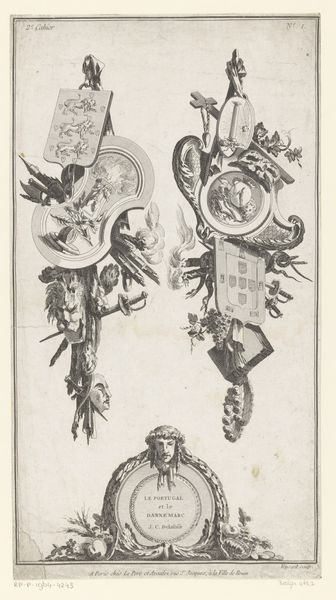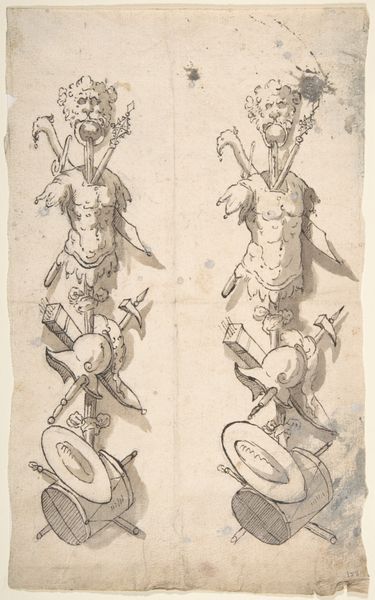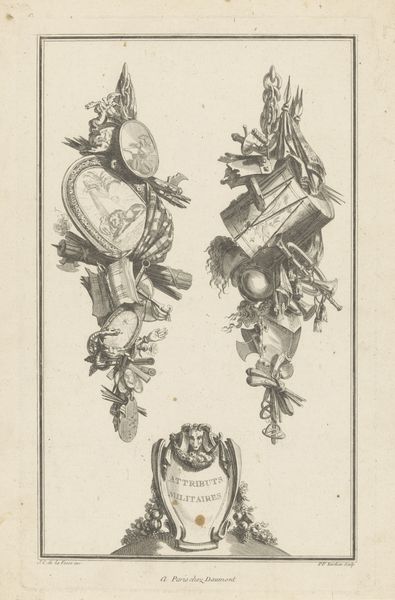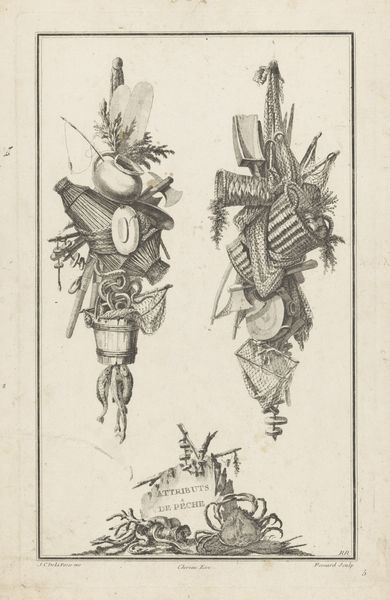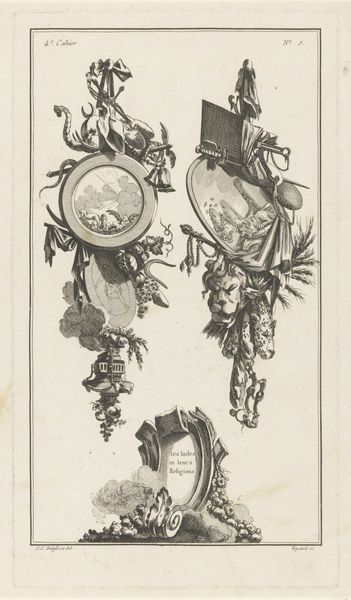
Dimensions: height 345 mm, width 215 mm
Copyright: Rijks Museum: Open Domain
Curator: Looking at this print titled “Trofeeën met schilden en harnas” from 1771, by Pierre François Tardieu, housed right here at the Rijksmuseum, one is struck by how it visualizes power. It’s quite detailed, an etching of trophies assembled from shields and armor. Editor: My first thought? A fancy yard sale after a historical war! It's a little cluttered but kind of awesome too, like a chaotic Baroque still life…with weapons! Curator: Exactly. Baroque, and notice how the piece showcases a tradition of allegorical representation. The trophies are not just collections of objects. They tell a story of victory, dominance and, perhaps, the trappings of war more generally. These images played a role in constructing and perpetuating narratives of state power. Editor: Absolutely. And what I find amazing is how something meant to celebrate victory can also feel…melancholy? These aren’t just objects; they represent real people, real battles. There’s a ghostly absence. Curator: Indeed. Considering the period, imagery like this circulated widely as visual propaganda but also influenced the decorative arts and theatrical design of the time. This image would resonate in a culture steeped in notions of chivalry and military prowess. The print would have likely been commissioned for some large civic celebration. Editor: It feels staged, even ornamental. Not exactly how war feels like, or at least not my personal association. You know, I would totally wear a helmet designed like this! Forget functionality, just imagine the artistic statement at the grocery store. Curator: Interesting that you describe it that way. It does straddle that line between documentation and idealized vision, certainly a comment on the visual culture surrounding warfare and how it impacts the society beyond the battlefield. Editor: Well, thanks to Pierre and this little etching we are able to continue debating the paradoxes of it centuries later, a constant reinterpretation. It’s just, in the end, it's still a bunch of stuff after the party's over, you know? Curator: It's fascinating how it all boils down to visual language of power, constantly being reinterpreted as cultural object and signifier, long after the battles have ended.
Comments
No comments
Be the first to comment and join the conversation on the ultimate creative platform.
